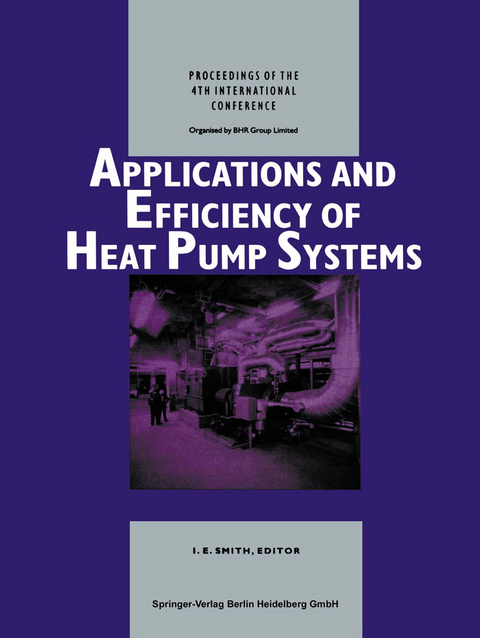
Applications and Efficiency of Heat Pump Systems
Springer Berlin (Verlag)
978-3-662-30181-4 (ISBN)
System design.- Design of a Vapour Compression Heat Pump in a Heat Exchanger Network.- Process Integration of Various types of Heat Pump.- Experimental Hybrid Heat Pump of 1000kW heating capacity.- A 'Self-Regulating' Heat Pump for Renewable Energy Applications.- Experimental Results of a Double-Lift Compression-Absorption Heat Pump.- The Compression-Absorption Cycle: A High-Temperature Application.- Working fluids and CFC replacements.- CFC Alternatives for High-Temperature Heat Pump Applications.- Prediction of Thermodynamic Properties of CFC Mixtures using the CCOR Equation of State.- Ethylchloride: A Viable Alternative for Medium and High-Temperature Compression Heat Pump Cycles.- Applications for heat pumps.- Potential for MVR in Indian Distilleries.- High-Temperature Process Drying with Hybrid Desiccant-Heat Pumps Systems.- Heat Pumps for Heating and Cooling of Hotels.- Thermodynamic Gestion and Thermal Comfort in a Solar TV Complex Building in Brussels: First Results.- An Open Cycle Absorption Heat Pump: A System for Drying Agricultural Products.- Heat Pumps with Different Energy Collectors in Army Barracks (Volkach, Germany): Results from Three Heating Seasons (1986-1989).- Predictive Control of a Hybrid Heating System Including a Heat Pump.- Feeding Large Heat Pumps from Sewage Water Treatment Plants.
| Erscheint lt. Verlag | 23.8.2014 |
|---|---|
| Zusatzinfo | VI, 189 p. 89 illus. |
| Verlagsort | Berlin |
| Sprache | englisch |
| Maße | 210 x 279 mm |
| Gewicht | 500 g |
| Themenwelt | Naturwissenschaften ► Biologie ► Ökologie / Naturschutz |
| Technik ► Bauwesen | |
| Technik ► Elektrotechnik / Energietechnik | |
| Schlagworte | air pollution and air quality • Cooling • Environment • Heating • Heat Pumps • Heizung • Kältetechnik • Kühlung • refrigeration • Umwelt • Wärmepumpe • Water Quality and Water Pollution |
| ISBN-10 | 3-662-30181-4 / 3662301814 |
| ISBN-13 | 978-3-662-30181-4 / 9783662301814 |
| Zustand | Neuware |
| Haben Sie eine Frage zum Produkt? |
aus dem Bereich


